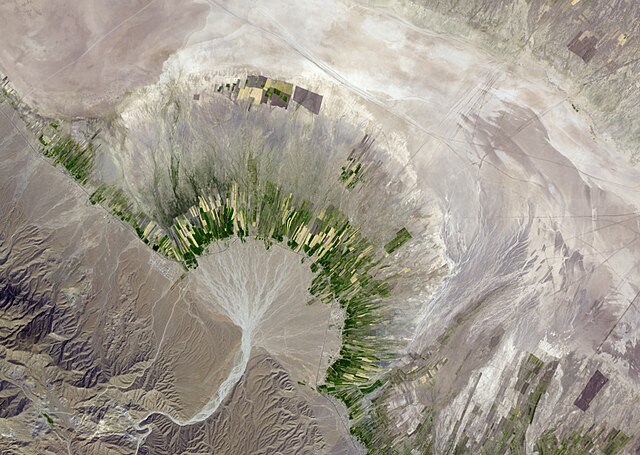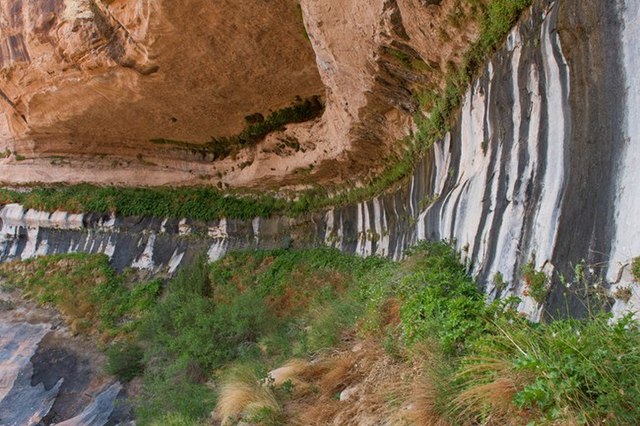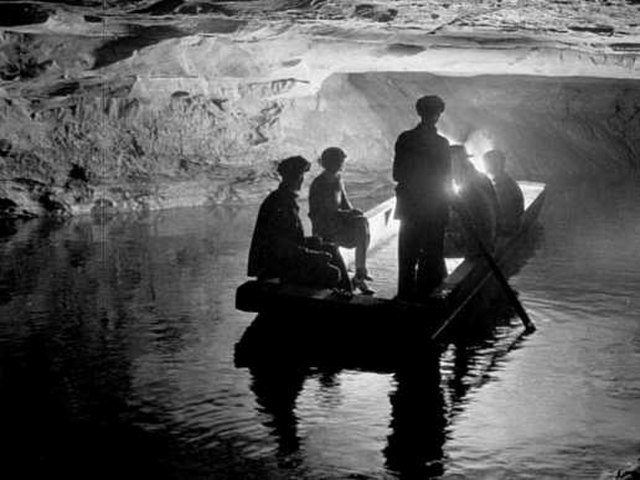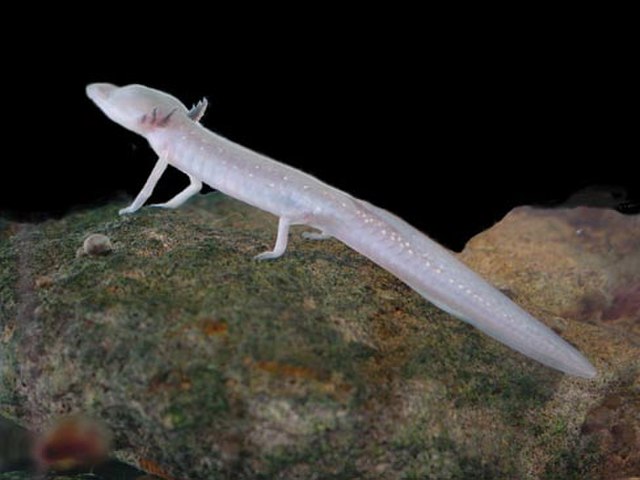A qanat or kārīz is a system for transporting water from an aquifer or water well to the surface, through an underground aqueduct; the system originated approximately 3,000 years ago in what is now Iran. The function is essentially the same across North Africa and the Middle East but the system operates under a variety of regional names: qanat or kārīz in Iran, foggara in Algeria, khettara in Morocco, falaj in Oman and the United Arab Emirates, karez in Afghanistan and Pakistan, uyūn in Saudi Arabia, etc. The largest extant and functional qanat systems are located in Iran, Afghanistan, Oman, the oases of Turfan region of China, Algeria, and Pakistan.
Water channel of Qanats of Ghasabeh, Iran
Qanat in Kashan surfacing within the Fin Garden; it is thought to have served Iran's Sialk area for thousands of years.
A kariz surfacing in Niavaran, Tehran, currently used for watering the grounds of The National Library of Iran
Alluvial fan in southern Iran. Image from NASA's Terra satellite.
An aquifer is an underground layer of water-bearing material, consisting of permeable or fractured rock, or of unconsolidated materials. Aquifers vary greatly in their characteristics. The study of water flow in aquifers and the characterization of aquifers is called hydrogeology. Related terms include aquitard, which is a bed of low permeability along an aquifer, and aquiclude, which is a solid, impermeable area underlying or overlying an aquifer, the pressure of which could lead to the formation of a confined aquifer. The classification of aquifers is as follows: Saturated versus unsaturated; aquifers versus aquitards; confined versus unconfined; isotropic versus anisotropic; porous, karst, or fractured; transboundary aquifer.
Water in porous aquifers slowly seeps through pore spaces between sand grains
Water in karst aquifers can form subterranean rivers.
Texas blind salamander found in Edwards Aquifer







